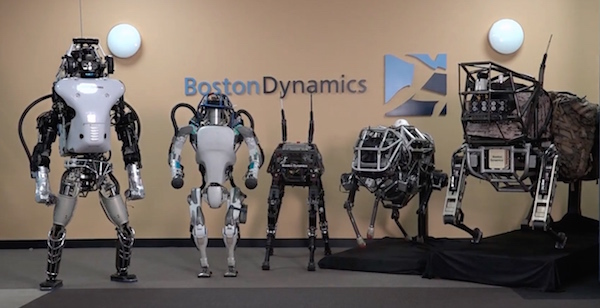Some robot companies build machines that can walk around, as opposed to those that stay put and perform precise tasks in manufacturing.
Boston Dynamics creates walk-about robots with two legs and four — both of which are good.

We humans walk around all the time and think nothing of it. But machines must be programmed to readjust constantly because of the changing effect of gravity on a moving physical object.
One important date in automation history was the 2011 Fukushima nuclear disaster which showed that mobile robots were needed in situations where humans were endangered by their mere presence.
Early attempts at building ambulatory robots were not alway successful. Here’s a fun video dated 2015 from the DARPA Robotics Challenge, a demanding competition that focused on disaster and emergency-response scenarios — where not all contestants made the grade:
Six years have passed, and Boston Dynamics just released a video showing off some very impressive dance moves — indicating how much progress has been made in the world of robots:
In any case, robots are increasingly becoming more capable at replacing human workers by the millions, so America and the rest of the West won’t need to import any more foreigners for basic labor, because
Automation Makes Immigration Obsolete.